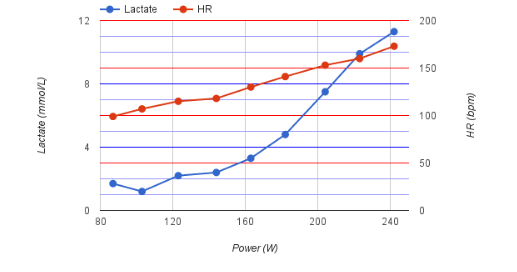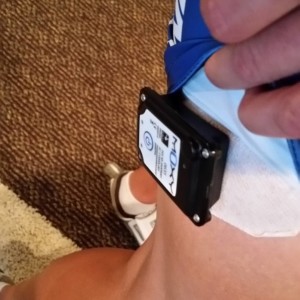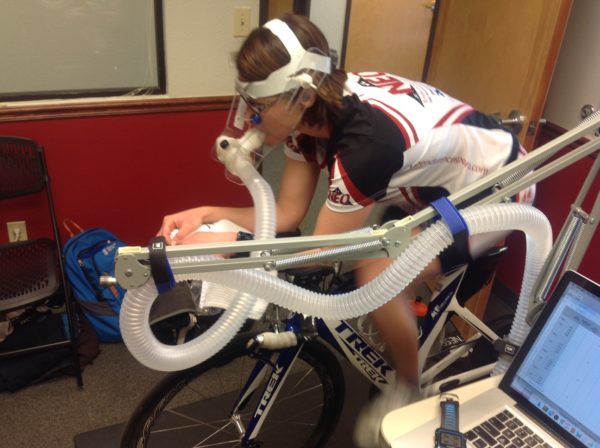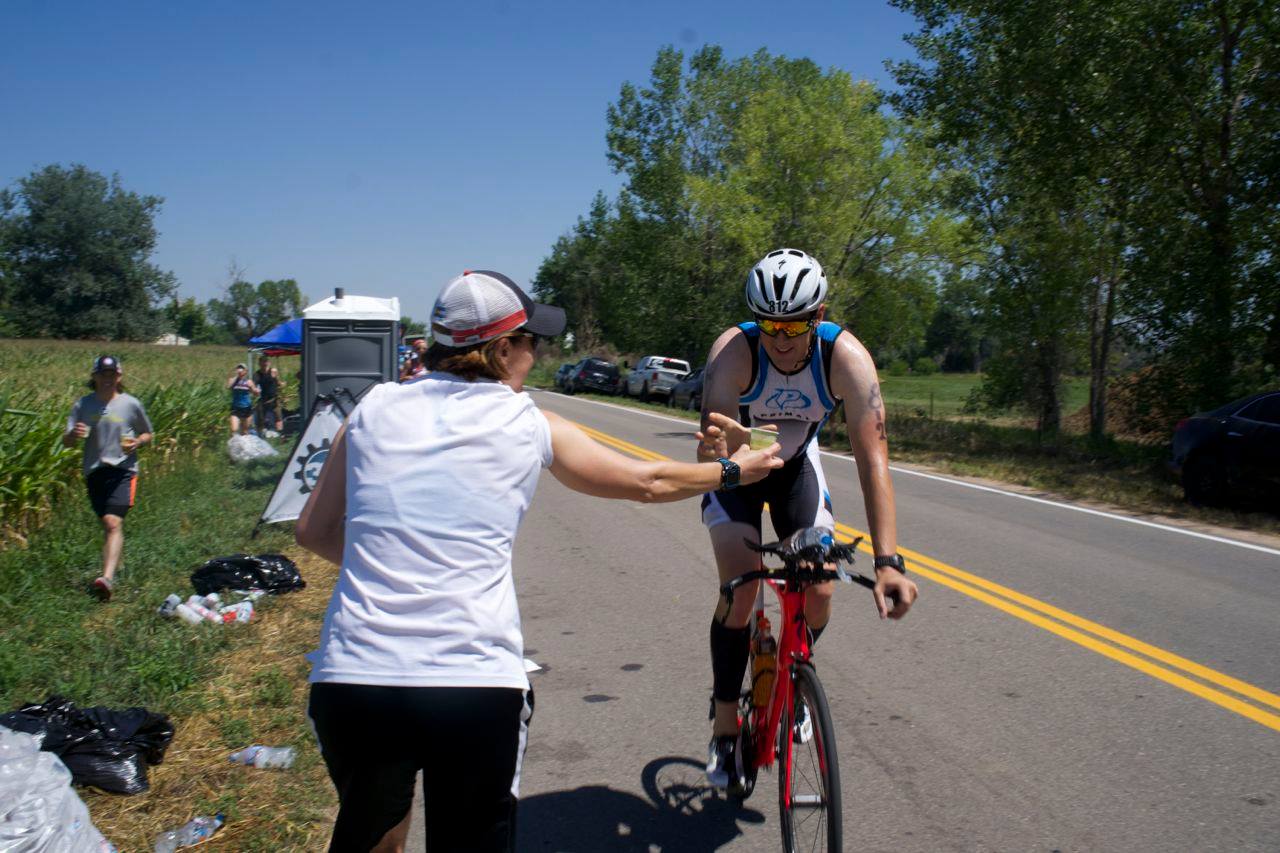Whether you are an elite athlete or just getting started, there are benefits to getting physiological testing done. The more you measure, and the more you (and your coach) know about the state of your systems that impact performance, the better decisions you can make regarding your training. In his post I will go through some of the common tests and why you might consider the test.
VO2 Max
Definition: Your VO2 max is your maximal oxygen uptake, and it’s reported as volume of O2 (mL) per unit time (min) per unit of body mass (kg). If your body is able to consume more oxygen, you should be able to go faster. The caveat to this is that performance also depends on metabolic, neurological, and muscular systems.1 So even if your VO2max is high, if your other systems perform sub-optimally, you would need to address those as well to see performance gains. VO2max is trainable to an extent, but there is a genetic component to the value and improvement.
The Test: The test involves a metabolic cart – a device that measures gas exchange. You breathe into a mask that collects all the gases that you exhale as your exercise intensity is increased in predetermined steps after short amount of time. The test is stopped when you say you can’t go any more…exhaustion. A gas analyzer gives O2 and CO2 ratio (RER: Respiratory Exchange Ratio) to determine oxygen consumption, and from that your VO2 Max is calculated.
The Result: The test result is the amount of oxygen you can consume at your hardest effort. Because physical activity depends on oxygen, better performing endurance athletes typically have higher VO2 max values. The result tells you a bit of your current fitness state and your potential. But it’s only one piece of the puzzle, especially because of genetic markers can impact an individual’s ability to improve VO2 max.
Untrained subjects might see their VO2 max increase relatively with training, simply because they were way below their potential to start. Highly trained athletes seeing performance improvement may not see an increase in VO2 max if their gains are coming from improvements in other systems or increased efficiency.
Lactate Threshold Testing
Definition: Lactate threshold, LT, or often abbreviated as “threshold” is another common physiological testing mechanism. I explained threshold a bit more in depth in this post but here’s the quick version. Lactate is a product of our metabolism that our body uses as fuel (it’s not why your muscles are sore the next day after a hard workout.2,3) As we increase intensity, metabolism increases and more lactate is produced. The point at which lactate production exceeds lactate consumption is “lactate threshold.”
The Test: Lactate testing also involves a graded exercise test, with longer intervals than VO2 (4-5 minutes), and requires a small blood sample. A finger or earlobe prick usually provides the drop of blood. The drop of blood goes on a small strip or into a capillary tube, and that sample is analyzed. While you’ll still work pretty hard with this test, you don’t need to quite reach the same exhaustion levels as with the VO2 max test.

The Result: Blood lactate levels plotted over the intensity changes tells you how much lactate is in your blood at these specific effort levels. The resulting chart is then analyzed and your lactate threshold is determined. Knowing your pace or power and heart rate at your lactate threshold can help you know where to train.
Muscle Oxygen Testing (SmO2)
Definition: SmO2 testing is the new kid on the block. Sensors, such as the MOXY Monitor, use Near Infra-Red light (from an LED) to measure the percentage of oxygenated hemoglobin and myoglobin in the muscle, SmO2. As we demand different amounts of work from our muscles, our body changes the amount of oxygen it delivers to those muscles. (I wrote more in-depth about it here: Part 1 and Part 2)
The Test: The device is simply attached to your skin with tape. It’s often further secured (either with additional wrap or under bike shorts) and once it’s on it is transmitting data so you get real-time data during the test. This is in contrast to the periodic samples taken in blood lactate testing. The sensor can be placed on any muscle, though with cycling and running the vastus lateralis is often the muscle of choice.

There are a couple basic test protocols that can be used with a muscle oxygen sensor. The first is used if you are starting with a blank slate with no estimated value for threshold. This is a graded exercise test similar to the one used to test lactate threshold. The athlete starts very easy and increases intensity (pace on a treadmill or power on the bike) in specific increments. The warm-up is included in the test. The other protocol is often called a 5-1-5 test, where you perform a five minute stage at an intensity, stop completely for one minute, then repeat another five minutes at that same intensity. After another one-minute rest, the intensity is increased for the next 5-1-5. The test is stopped when SmO2 has a significant downward trend.
The Result: SmO2 is the percentage of oxygenated hemoglobin and myoglobin in your muscles, and because the test result is insight to how the oxygen delivery system in your muscles change at different workloads, and with rest during the 5-1-5 test, the test is useful to establish training zones (HR, pace, power) specific to your physiological needs. Of the three tests, it’s the only metric that you can also easily monitor during regular training sessions. At a cost less than some power meters, it’s also an affordable option to have for regular training with the device, and many computers/watches support the metric. There are some subtleties to understanding the data and SmO2 trends, so there is more of a learning curve to use it as opposed to using heart rate.
Summary
All three physiological testing tools provide useful, but different, information in understanding pieces about of your current state of fitness. Used individually, or better yet, in conjunction with each other, results can provide useful information to help craft an individualized and appropriate training plan to help you reach your performance goals. All tests need some kind of additional metric to go along; pace, power, and/or heart rate so that you can relate the result back to your training. If you want to train more effectively, get tested!
| VO2 | Lactate | SmO2 | |
| Effort required | Maximal | Sub-max | Sub-max |
| Result | Max O2 consumption | Lactate threshold | SmO2 trend |
| Method of sampling | Wear mask to breathe into gas analyzer | Blood test via finger prick | LED device attached to muscle |
| Convenient personal use | No | No* | Yes |
*lactate analyzers aren’t any more expensive than your bike computer or GPS watch, but the test is best performed by someone else other than the test subject.
- Triathlon Science. Chapter 11, Aerobic Capacity, Ross Tucker p.161
- http://www.scientificamerican.com/article/why-does-lactic-acid-buil/
- http://ajpregu.physiology.org/content/287/3/R502







